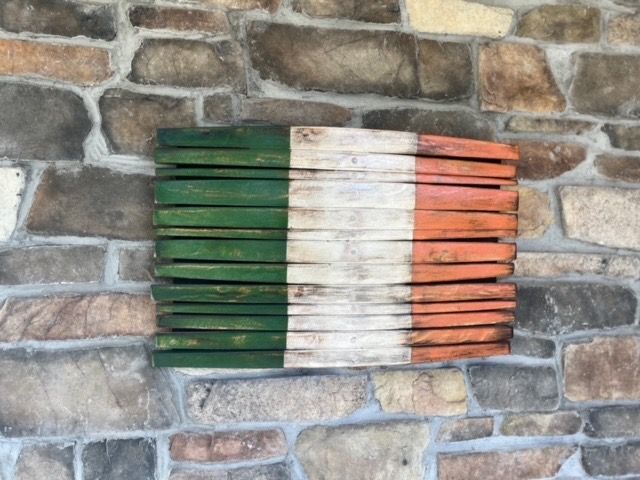By Peter McDermott
I saw my first ever vulture when climbing the Volcán Maderas in Nicaragua a year ago. The first in the flesh, that is. And it wasn't circling overhead as it might in a spaghetti western with several of its cohorts.
Rather it lifted itself from a high branch, sashayed against some more and then flew off. The sighting was, to be sure, a reminder of the potential dangers. We'd already heard several references to a horrifying incident, a salutary tale about the wisdom of taking a guide, though it wasn't compulsory.
Maderas has been dormant for 3,000 years, and in its crater now is a rainwater lake, which most visitors who get up that far like to climb down to have a closer look at. Such was the case with two travelers some years before. One broke his leg, however, and his companion went to his aid, and the same thing happened to him.
At some point, days later, or weeks later when they didn't turn up at home in Europe -- the versions differed in this detail -- the alarm was raised. Our guide, who planned to return to college to study French in preparation for a teaching career, was a teenager back then. He joined in the search parties that combed through the 1394-meter-high Maderas. They eventually found the remains of the unfortunate pair in the crater, well picked by the vultures.
Blood was spilled on the mountain during our trip, but little real damage was done. More on that later.
I was there last Easter, high summer in that part of the world and generally a special time for Nicaraguans during which they take time off. I was warned to be meticulous about applying sun block on my Northwest European skin, but on Good Friday I followed a religious procession without it. That many brown-skinned locals were sporting umbrellas should have been sufficient reminder. In any case, I was the color of a tomato after about 20 minutes.
I was staying as the guest of my friend Maria, who was serving with the Peace Corps, and if I took away anything from that trip it was a great admiration for the volunteers' commitment and sense of adventure (I also had the pleasure of meeting her friends Matt and Jennifer). They sign up to live and work long hours in a foreign county for 27 months.
Nicaragua is not a bad place to be assigned. As exotic places go, too, it's a cheap vacation, once you've gotten yourself to Augusto C. Sandino International Airport. Nightly accommodation rates range from $5 ("budget") to $50 ("high end"), says Lonely Planet's guidebook. Americans, I discovered talking to some seniors at the airport, are increasingly attracted to its low property prices. The Atlantic coast is particularly popular.
I was headed in the other direction, to a town that wasn't very far from the Pacific Ocean. I stayed in a two-room structure that was at the back of someone's house on a side street in Diriamba (pop. 31,500), about 40 minutes from the nation's capital, Managua.
The running water was cold only, though that was barely an issue in the tropical heat, and the amenities generally very basic. The little house was under a tree that grew avocados, and when one fell, as they regularly did, it sounded like a concrete block had been dropped on the corrugated-iron roof.
Roosters crowed at dawn, but all through the night as well; dogs barked, and all sorts of exotic birds joined in what seemed like an all-night chorus. My reverie was disturbed one night, too, when a vicious ant bit down hard on my nose, drawing blood. In New York, mosquitoes give me a miss; in Nicaragua, they liked me plenty. There was also the ever-present army of midges. And did I mention the dust?
I'm not really the adventurous type; canoeing, for instance, will certainly never be part of my life and while I understand the appeal of skydiving, it won't be on my bucket list. My idea of a relaxation is sitting in an ill-lit pub watching soccer and if it has a pool table, all the better.
However, travel is almost always fun and I loved Nicaragua. Simba and Ranger, the friendly Labradors belonging to the house, more than made up for the nightly cacophony. And maybe it was the elevation, Diriamba being more than 1,500 feet above sea level, or the dry heat, or a combination of both, but I could breathe easily, which is always a big plus for someone with a history of asthma and respiratory issues.
Of course, it is possible to spend a great deal of time in Nicaragua in bars watching soccer; indeed, one couldn't live there and not be aware of the European Champions' League or Barcelona or Real Madrid.
The world has transformed in crucial ways since Central America was near the top of the international agenda in the 1980s. Nicaragua is still a developing country, with grinding poverty, but it can't be referred to as "remote," no more than anywhere else in the world.
A generation ago, the Reagan Administration spent a good deal of its energy trying to overthrow the Sandinista Revolution. Nicaragua captured the left's imagination in the way Spain had in the 1930s. In the latter case, the right won a total military victory and established a dictatorship that lasted almost 40 years. In the Central American nation, the revolution lost an election in 1990.
President Daniel Ortega, the longtime leader of the Sandinistas or FSLN, returned to power in November 2006 and is campaigning to be reelected this year. In Diriamba, a leftist stronghold, one can see all sorts of painted references to "Daniel." One also hears, though, the refrain "I'm a Sandinista, not a Danielista," which suggests that the controversial president does not personify the ideals of the revolution.
One who undoubtedly agrees is the poet and liberation theologian the Rev. Ernesto Cardenal, who was appointed Nicaragua's first ever minister of culture following the revolution in 1979. He broke with Ortega in 1994 to form the Sandinista Renovation Movement, which participates in elections. He has plenty of admirers still, including the Rev. Joseph Mulligan, the New York-born Jesuit who has lived in Nicaragua since 1986. I traveled to Managua by microbus, a van that squeezed in about a dozen people, to interview Mulligan about his life, which included a two-year stint behind bars for anti-Vietnam War activities. (The subsequent profile appeared in the Oct. 6 issue of the Echo, https://www.irishecho.com/?p=21663, and I've written also about his campaign to find out more about the murder of his fellow Jesuit Jim Carney in Honduras in 1983.) The priest also spoke to me about social conditions in Nicaragua, whose government he said only spent half of what it should on health and education.
The experts say that Managua can be skipped, as its most important architecture fell victim to the 1972 earthquake and the city was never rebuilt. In contrast, the island of Ometepe in Lake Nicaragua is always recommended.
It took several modes of transport and as many hours to get to Ometepe -- by microbus, converted Bluebird school bus (not yellow, but rather colorfully attired with religious and soccer paraphernalia) and ferry. Once on the island, we hired a tuk tuk (a motorized three-wheeler), which took us the more than 20 miles to the Finca Magdelena, a collective farm and hotel. The tuk tuk, it should be noted, wasn't quite made for the last part of the journey, which was uphill along a dirt road in the dark. But we got there.
Ometepe has two volcanoes, Maderas, at the foot of Finca Magdelena, and the 1,610-meter Concepción, which was active in the days before we arrived. According to the Lonely Planet guidebook, doing the Volcán Concepción involves a 10-to 12-hour day: a "hike up loose volcanic stone to the summit of this looming peak can be tough, so be in good physical condition and bring water, snacks and real hiking shoes." So, thanks, but no thanks.
The journey to the Maderas summit is an arduous 3 to 4-hour hike, much of it through thick woods and forest and luckily we adhered to the water part of the above prescriptions. Early in journey, one comes upon a petroglyph from 300 BC depicting the rain god. Fourteen hundred such boulders have been documented on the 106-square mile Ometepe. Another highlight comes at the halfway mark, a stunning view of Concepción on the other side of the island.
For a Boston Globe writer, Maderas' fog and trees recalled the "Lord of the Rings" film. Well, I'll take his word for it, having never seen it, but there was no fog when we were there. (A fine gallery of photos of his adventure can be found by a simple online search of "Volcán Maderas.")
We reached the summit at about 1 p.m. -- admittedly my pace slowed things somewhat -- but didn't venture into the crater: our guide thought it best that we head back before it got too late. That was being overly cautious, as the sun was shining as strongly as ever when we got back about 4:45 p.m. It's true, however, that while it's still bright at 6 p.m., it's fully dark by 6:30 at that time of year.
The journey down proved a little more difficult for me than the climb. High summer doesn't entirely dry out Maderas following the rainy season, and the pathways can be slippery. My New Balance sneakers failed to live up to their name and in a fall I hit my head off of a rock. Happily, the impressive looking cut over my left eye didn't require stitches.
I'd never been to a volcano before my three-day trip to Ometepe at Easter 2010. I'd never ever seen the Pacific Ocean either, but it's a relatively uncomplicated 45-minute journey from Diriama to the beach -- via microbus and Bluebird bus. It was the perfect way to recover.
[PHOTO BY PETER MCDERMOTT]











